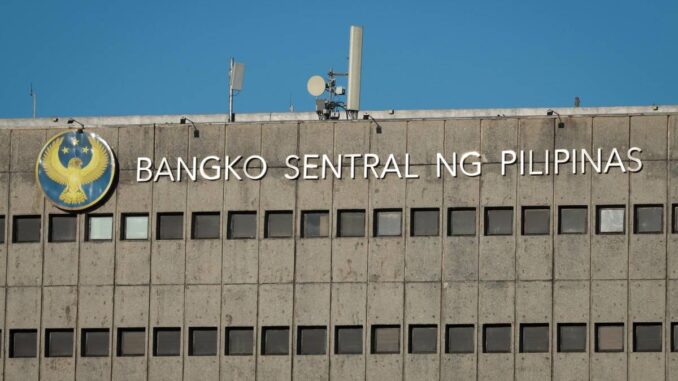
MONETARY authorities could cut key interest rates twice more before the year ends following lower-than-expected September inflation, analysts said, but significant reductions are unlikely due to continued domestic and global challenges.
Inflation markedly slowed 1.9 percent last month from 3.3 percent in August, falling below the Bangko Sentral ng Pilipinas’ (BSP) 2.0- to 4.0-percent goal. It was also lower than the central bank’s 2.0- to 2.8-percent estimate for the month and the 2.6-percent median in a Manila Times poll of economists.
The September inflation result — the lowest in over four years or since May 2020’s 1.6 percent — brought the year-to-date average to 3.4 percent.
HSBC Global Research economist Aris Dacanay said the fight against inflation was essentially over and raised the likelihood of further policy rate cuts during the last two Monetary Board meetings for the year.
The BSP’s policymaking body kickstarted an easing cycle last August 15, ordering a 25-basis point (bps) cut — the first in nearly four years — that brought the benchmark rate to 6.25 percent.
The Monetary Board will meet twice more this year to discuss policy, on October 16 and December 19.
Dacanay said that “with inflation risks largely dissipating, largely due to rice, the room to cut policy rates in both the October and December rate-setting meetings is vastly increasing.”
“The BSP seems to be gaining confidence as well, as reflected by Governor Remolona’s pronouncement … that cutting twice this year is possible, in principle,” he added.
Late last month, central bank Governor Eli Remolona Jr. said that two 25-bps cuts during the final two policy meetings this year were possible. Replicating the jumbo 50-bps cut announced by the US Federal Reserve a week earlier, however, could lead to a “hard landing” for the economy.
He reiterated this last week, saying that 25-bps cuts will be the norm and that 50 bps, “while there is room for it … usually you’re worried about a hard landing when you consider 50 basis points.”
The BSP last month also slashed bank reserve requirements by as much as 250 bps, to take effect on October 25, but Dacanay said the impact on inflation was likely to be minimal.
While approximately P450 billion of liquidity is to be injected into the economy, he said that most or all of it was expected to be absorbed by the BSP through its various monetary tools.
Bank of the Philippine Islands senior economist Emilio Neri, meanwhile, said inflation may have hit its lowest point this year but could rebound in the last quarter of 2024 as favorable base effects diminish.
“Nevertheless, we expect inflation to remain under control, potentially staying below 3.0 percent in the absence of supply shocks,” he added.
“This favorable condition could extend into 2025.”
Neri said that the potential impact of the La Niña weather pattern and rising cases of African Swine Fever were upside risk but added that stable commodity prices could serve as a mitigating factor.
“We now expect full year inflation to settle at 3.2 percent in 2024 and 2.8 percent in 2025,” Neri said.
“While we expect more monetary easing, it is unlikely that the BSP will adopt an aggressive approach,” he added.
Neri expects two additional policy rate cuts in 2024, with further reductions likely in 2025, potentially lowering the policy rate to between 4.5 percent and 5.0 percent by the end of next year.
With inflation risks linked to local and global supply constraints and exacerbated by geopolitical tensions, interest rates are unlikely to return to the low levels of the past decade, he added.
“The BSP may continue to cut interest rates in the coming months, although aggressive rate cuts are unlikely due to domestic and external constraints,” Neri continued.
“This move may lead to a steepening of the yield curve, with a more pronounced impact on the short end compared to the long end of the curve.”


Be the first to comment